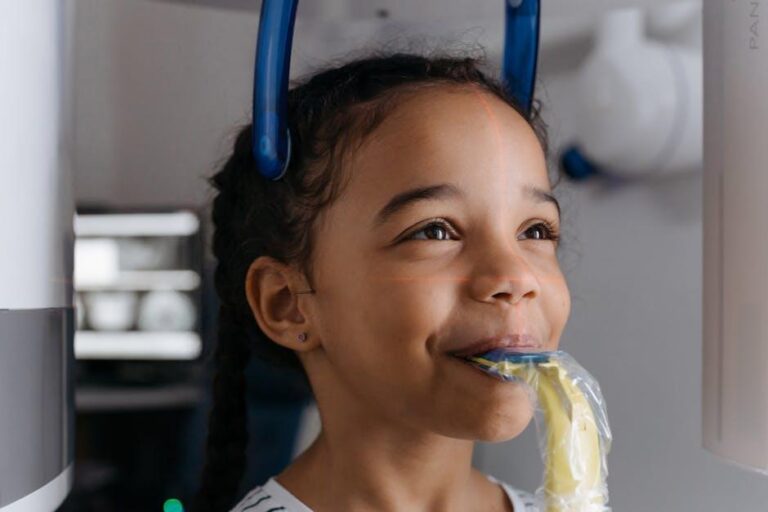1 in 3 Kids Has Dental Problems, Poll Finds – U.S. News & World Report
Recent findings from a nationwide poll have brought a concerning statistic to light: 1 in 3 kids in the United States suffers from dental problems. Despite an overall improvement in adult dental care through advances in hygiene and treatment, childhood dental health appears to be lagging behind. This article dives deep into the causes, consequences, and solutions for this growing health issue affecting millions of children across the country.
Understanding the Scope of the Problem
The U.S. News & World Report poll highlights a troubling trend in pediatric oral health. Children are at higher risk than ever for dental issues such as cavities, tooth decay, gum disease, and enamel erosion.
Key Findings from the Poll
| Dental Issue | Percentage of Kids Affected |
|---|---|
| Tooth Decay | 28% |
| Gum Disease | 10% |
| Tooth Sensitivity | 20% |
| Other Dental Problems | 5% |
These figures show that dental problems in children are not only common but also varied, affecting multiple aspects of oral health.
Why Are So Many Kids Experiencing Dental Problems?
Several factors contribute to the high rate of dental problems among children. Understanding these helps parents and caregivers take appropriate preventive action.
Main Causes of Childhood Dental Problems
- Poor Oral Hygiene Practices: Inconsistent or improper brushing and flossing can leave harmful plaque buildup.
- Sugar-Heavy Diets: Frequent consumption of sugary foods and beverages increases the risk of cavities and enamel loss.
- Lack of Regular Dental Checkups: Skipping routine dental visits delays early diagnosis and treatment.
- Socioeconomic Factors: Limited access to dental care and education impacts low-income families disproportionately.
- Medical Conditions and Medications: Some health issues and medicines can affect saliva flow, which protects teeth.
The Consequences of Untreated Dental Problems in Kids
Dental issues in childhood go far beyond cavities. Left untreated, they can result in:
- Severe pain and discomfort affecting eating and sleeping habits
- Speech development problems due to missing or damaged teeth
- Lower self-esteem and social challenges linked to appearance
- Increased risk of permanent tooth damage later in life
- Higher dental treatment costs due to complex procedures
Benefits of Maintaining Good Oral Health in Children
Promoting proper dental care habits early in life leads to lifelong benefits:
- Stronger, healthier teeth and gums
- Reduced risk of chronic dental diseases
- Improved overall health and nutrition
- Better concentration and academic performance without pain distractions
- Greater confidence and quality of life
Practical Tips for Parents to Prevent Dental Problems
Parents can take proactive steps to safeguard their children’s dental health. Here are some expert-backed strategies:
- Start Early: Begin cleaning your baby’s gums soon after birth and brush teeth twice daily when they erupt.
- Use Fluoride Toothpaste: Use an appropriate amount of fluoride toothpaste from toddlerhood to strengthen enamel.
- Limit Sugary Snacks and Drinks: Encourage water and healthy snacks like fruits and vegetables instead of sugary treats.
- Establish a Dental Routine: Make brushing and flossing consistent, fun, and supervised to ensure effectiveness.
- Schedule Regular Dental Visits: Biannual checkups from age one can prevent problems and reinforce good habits.
- Lead by Example: Kids imitate adults—prioritize your oral health to inspire them.
Case Study: Success Story of Improved Pediatric Dental Care
In a mid-sized city in Ohio, a community dental health program targeted at low-income families resulted in a 40% reduction in childhood cavities over three years. The program included free dental screenings, educational workshops, and distribution of dental hygiene kits.
Parents reported better understanding of dental health, improved brushing habits at home, and increased attendance at dental appointments. This case highlights how community involvement and education can directly improve childhood dental outcomes.
Firsthand Experience: A Parent’s Perspective
Jessica, mother of an 8-year-old, shares her experience:
“We didn’t realize how serious dental problems were until my son complained of tooth pain. After visiting our dentist, we learned he had multiple cavities. We changed our family routine — cutting back on sugary drinks, brushing twice daily, and seeing the dentist every six months. Now his dental checkups come back clean, and his confidence has soared. I urge every parent to be vigilant early on.”
Summary Table: Quick Tips for Protecting Kids’ Dental Health
| Tip | Action |
|---|---|
| Oral Hygiene | Brush twice daily with fluoride toothpaste |
| Diet | Limit sugary and acidic foods & drinks |
| Dental Visits | Regular checkups starting at age 1 |
| Parental Role | Lead by example and supervise brushing |
| Education | Teach kids about the importance of oral health |
Conclusion
The alarming statistic that 1 in 3 kids in the U.S. experience dental problems calls for immediate awareness and action among parents, communities, and health professionals. With dental issues affecting children’s quality of life and overall well-being, prioritizing pediatric oral health is essential. Through education, preventive care, and regular dental visits, parents can reverse this trend and give their children the healthy smiles they deserve.
Remember, good dental habits start young—invest in your child’s oral health today for a happier, healthier tomorrow!


